ITPEnergised is a trusted advisor providing client-focused, reliable, commercially minded, environmental, engineering and risk management consulting services.
Developments to support the Energy Transition and wider pursuit of net zero can present significant risks to people and the environment in one of three ways:
- The proposed asset/facility involves significant hazards. For example, an offshore wind farm presents a number of significant risks to people which could result in multiple fatalities, including from fire, electrocution, drowning and falls from height. An onshore hydrogen production and storage facility involves hazards which present a risk of fire, explosion and asphyxiation which could also result in multiple fatalities.
- The proposed facility doesn’t involve significant hazards in itself, but is in close proximity to adjacent infrastructure which does incorporate significant hazards. For example, there may be a low risk of an onshore wind farm in a remote/rural location causing multiple fatalities. However, if located next to, say, an oil and gas storage facility, a failure or fault within a wind turbine could cause an incident within the neighbouring facility or, conversely, exacerbate or escalate an incident arising within that existing facility.
- Through a combination of the above – so a facility involving significant hazards in close proximity to an existing significant hazard facility, with potential “domino effects” in either direction.
Developers progressing such plans have a major responsibility. They must ensure and demonstrate that the project is progressing from concept design through to a built, operating asset in a way that reduces these risks ALARP (As Low As Reasonably Practicable).
In the UK, the Health and Safety at Work Act 1974 (HSWA) demands this and the EIA (Environmental Impact Assessment) Regulations 2017 specify that significant adverse effects of the development on the environment deriving from the vulnerability of the development to risks of major accidents and/or disasters are addressed; prescribing risk assessments and where necessary details of appropriate measures to prevent or mitigate these risks. This is often captured and delivered by means of a Major Accidents chapter in a project’s EIA.
To achieve this objective, developers must adopt and follow a robust and proportionate Safety Assurance Process such as that illustrated in Figure 1.
Our wider Technical Safety & Risk Capability Statement here presents an overview of this approach, whilst our CDM2015 Principal Designer Capability Statement here shows one route to deliver this support on development projects.
In applying such an approach, it is vitally important to recognise the financial risks developers are taking in progressing projects up to a planning/consenting decision, for example:
- Onshore consent, typically granted in the UK through local authorities.
- Offshore consent granted by the Marine Consenting Authority.
Clearly if consent is not granted, the time, effort and money spent on progressing the application to this stage (or stages, for developments comprising on and offshore elements) will be lost.
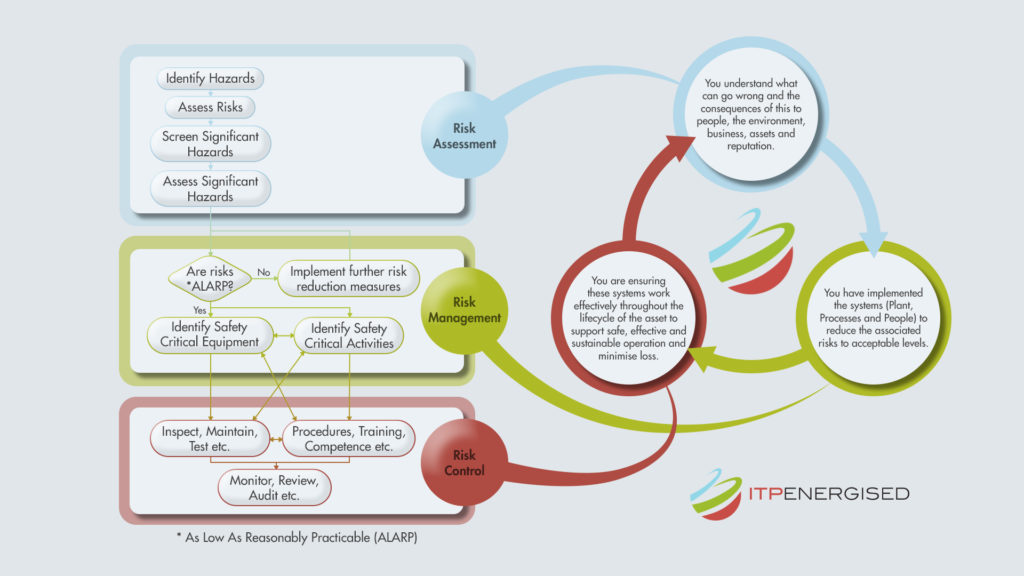
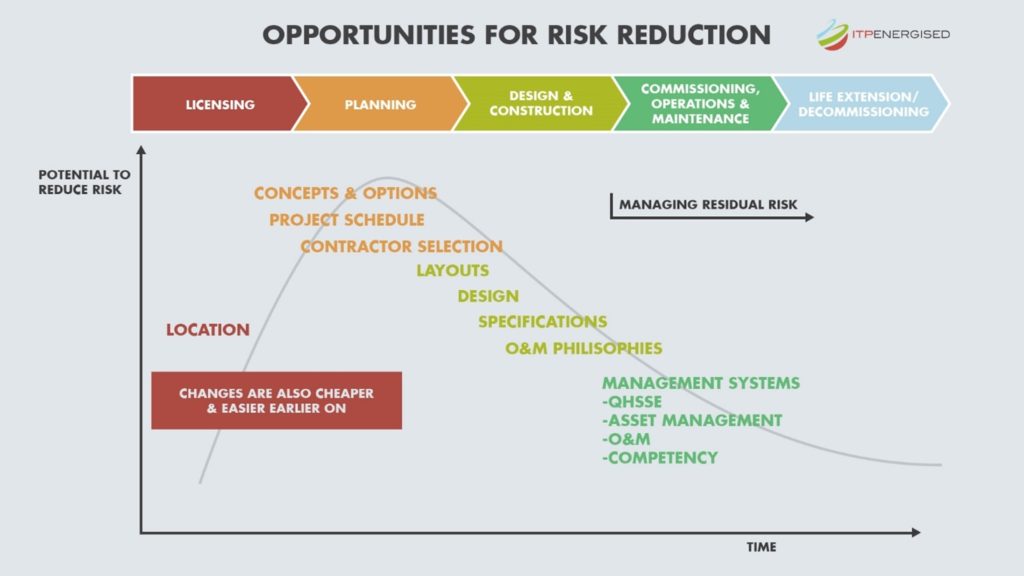
It is also crucial to recognise that it is the early planning/concept stage of a project that generally provides the greatest opportunity for risk reduction as illustrated in Figure 2. For example, the careful siting and positioning of assets and infrastructure and selection of technologies can “engineer-out” hazards, thereby satisfying the principle of “Elimination” which forms the top tier of the “Hierarchy of Risk Control” which underpins the principle of ALARP (see Figure 3 below and discussed further here).
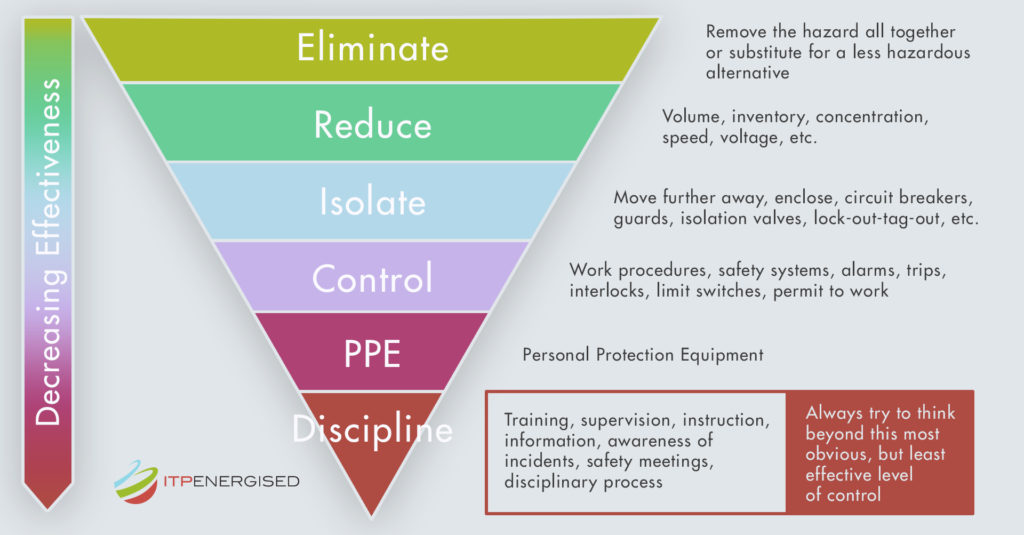
Through our experience in supporting a wide range of development projects with significant hazard potential, we have developed a process which allows us to provide the most efficient service to our clients with the goal of helping them gain consent for their development in the most cost-effective way.
This approach is based around the principle of “Primary” and “Secondary” Safety Issues as illustrated in Figure 4 below.
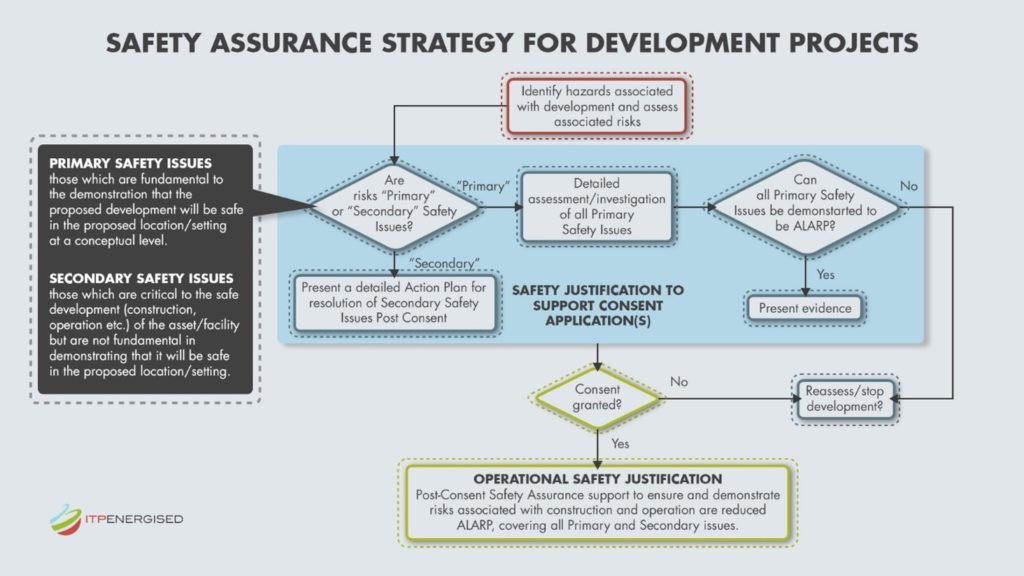
Due to their very nature, it is not necessary or appropriate to resolve “Secondary” safety issues to inform a planning/consenting decision. On this basis, to avoid any unnecessary effort and expense from all stakeholders, we only to seek to justify “Primary” safety issues in support of a planning/consenting decision, whilst presenting an action plan for the resolution of “Secondary” safety issues post consent.
Should consent be granted, then we work with the client to resolve all secondary justifications through the continuation of the overarching Safety Assurance Process as the project progresses beyond the planning/consenting phase, satisfying final investment decision and on into detailed design, construction and operation as illustrated in Figure 5 below.
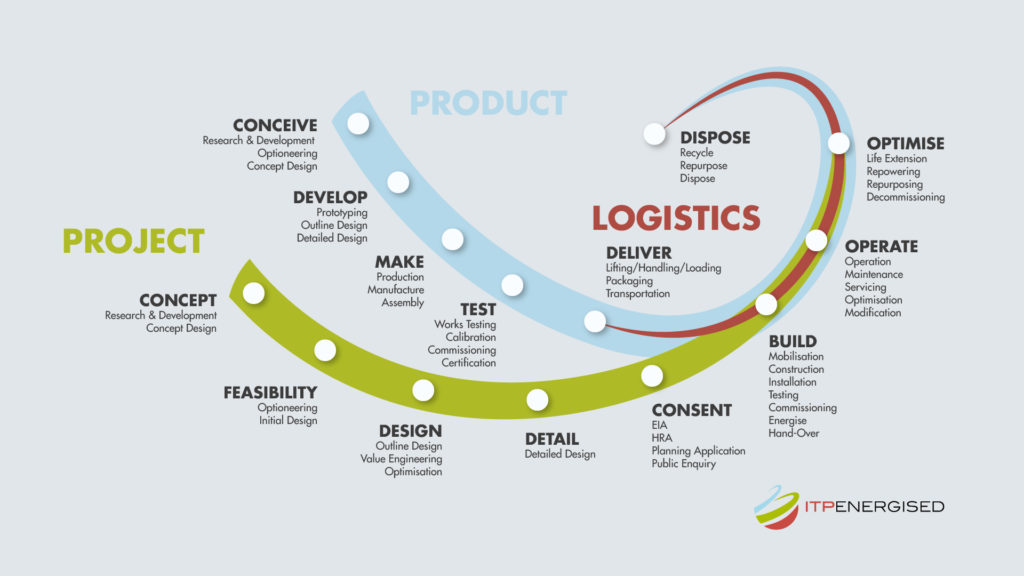
This tried and tested approach therefore carefully balances the need to:
- Provide an overall route-map to steer the deign towards a position that is “safe-by-design”, eliminating and reducing risks as far as reasonably practicable through the design phase and then putting systems in place for the management and control of residual risks throughout the construction, operational and end-of-life phases of the project.
- Providing the safety justification to satisfy the requirements and expectations associated with key milestones along the way, e.g. supporting positive consenting decisions.
- Only do what is required and at the right time to successfully navigate project milestones in a way that carefully manages costs to protect the business case that underpins the development.
Download the HSE Risk Management enabling Planning Consent Capability Statement PDF here.
If you need help or would like to discuss our services further, please contact us at info@itpenergised.com.

